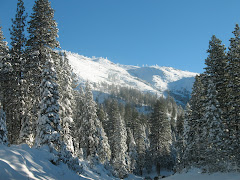
Three deciduous incisors are present in this photo.
Deciduous incisors differ from permanents by
1. they are whiter
2. they have a neck
3. they are smaller
Aging a horse by dental examination can be learned by studying and recognizing the normal eruption, anatomy, growth and wear of teeth. It is not an exact science as various factors can alter normal eruption and wear, but with experience and careful examination, a good approximation of age is possible.
The normal eruption times of the horse's incisor teeth are well documented and consistent enough to be very useful indicators of age.
Terminology:
eruption = a new tooth breaks through the gum line
deciduous teeth = temporary or 'baby' teeth
permanent teeth = adult teeth
'in-wear' = once opposite teeth meet after erupting and growing
'level' = about 6 months after in-wear, the tooth wears down to dentin.
occlusial surface = the surface of a tooth contacting the opposing tooth
incisors = the front teeth, used to bite and shear grass while grazing
--and one more just for fun
pseudopolyodontia = retained deciduous teeth

This photo illustrates permanent incisors "in=wear", permanent incisors erupting and deciduous incisors. By the end of this session, you should be able to estimate this gelding's age.
Note the bottom tooth on the far left is loose and ready to "fall out". A deciduous tooth, it is whiter, smaller and clearly has a neck.
So, how do we designate the individual incisors?
By number or name. We start our count from the middle, there are 3 upper incisors on the right and 3 upper incisors on the left. Also 3 incisors lower right jaw and 3 lower incisors left jaw. A total of 12 incisors in the horse.
Di= refers to deciduous incisors. The permanent teeth are represented by capital letters; I= adult incisor.
1/=upper tooth and /1= lower tooth
Di 1/1or I 1/1 indicates the middle teeth, also called centrals or nippers (count central teeth 1st).
Di 2/2 or I 2/2 refers to the intermediate incisors
Di 3/3 or I 3/3 are the lateral or corner incisors.
Below: the loose tooth has been shed.

Here I am showing you, starting on the right edge and moving left. I1/1(centrals) both left and right, the mid line of this colt's jaw is just below the edge of my thumb. Note the smooth occlusial surfaces.
Next is I2/ (intermediates) and below it the site of a freshly lost Di /2 and barely visible I /2. I2/ has a very rough occlusial surface since is not yet "in-wear".
The far left two teeth are Di 3/3(corners).
To age young horses it helps to memorize the following information.
Sequence of incisor tooth eruption in the horse.
Incisors..................Deciduous................... Permanent
First................. Di 1 birth-1st week....... I1 2.5 years
Second............. Di 2 4-6 weeks............... I2 3.5 years
Third................ Di 3 6-9 months............. I3 4.5 years
Further, remember that it then takes approximately 6 months for the teeth to meet or be considered "in-wear'. In an additional 6 months the teeth have worn to the dentin and are considered "level".
Another chart to memorize.
Deciduous "in-wear"...... Permanent "in-wear" then "level"
D1/1 @ 6 months............ I 1/1 @3 years...........@ 3.5 years
D2/2 @ 6 months............ I 2/2 @4 years...........@ 4.5 years
D3/3 @ 1 year................ I 3/3 @5 years............@ 5.5 years

The left side of this colt's mouth shows upper and lower corner deciduous teeth (or Di 3/3).
Erupted adult intermediate incisors (or I2/2), not yet "in-wear".
Lower I/2 is taller than I 1/, it erupted first which is most common.
Both left and right permanent central incisors (or I1/1)are "in-wear" and now actually "level".
So , put it all together how old is this colt?

I1/1 erupt @ 2.5, 'in-wear' @3, 'level' @ 3.5
I2/2 erupt @ 3.5, 'in-wear' @ 4, 'level' @ 4.5
I3/3 erupt @ 4.5, 'in-wear' @ 5, 'level' @ 5.5
Remember, not all horses follow the rules. This colt's lower right intermediate incisor was last and just a tad delayed in erupting, the opposing incisor was the first to erupt of the intermediates.
How old is he?
These photos were taken 3/22/2010. His birth date is May 8, 2006. How did you do? We'll take a look at the incisors again after his fourth birthday.







